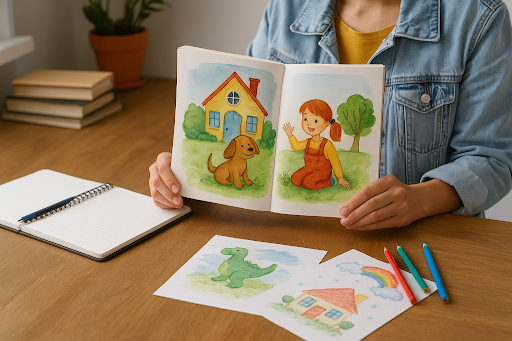Education
12 Tips to Dress Professionally Everyday

The way you dress for work plays a huge part in determining your success. Your clothes say a lot about your personality and people judge you based on them all the time. Therefore, it is very important to style your outfit appropriately.
But how can you determine what is appropriate and what is not? While there are many cool trends related to formal wear for women like chiffon stitched dresses not all of these are worth your time and attention. Most of these can make you look weird, to say the least. So, below is an easy guide to help you out.
Types of Work Outfits
Depending upon your work settings, you can choose from a variety of work attire. Below is a complete list of them.
Casual
It is a dressing style that is preferred in most offices nowadays. You can wear anything ranging from t-shirts and jeans to sweatshirts and pants while your workplace demands this kind of clothing style. But make sure that you don’t forget to wear blazers and suit jackets during interviews and presentations.
Smart Casual
Smart casual is all about adding a bit of fashion statement to your otherwise casual attire. Choose cool items like blazers, high-waisted skirts, trousers, blazers, belts, and heels while you have a smart casual as your office attire.
Business Casual
Business casual is a work attire in between the formal and the casual. If you’re not sure about the settings, you can opt for this attire. You can wear khakis, loafers, button-down shirts, belts, decent necklaces and boots in such settings.
Business Professional
If your enterprise has a more conservative setting, it is best to go for this kind of attire. These outfits need to be formal and fit. You can wear pencil skirts with button-down blouses, suit jackets, heels, and decent Maria B jewellery to get this look.
Business Formal
This type of dressing is normally suited for special business occasions. So, wear a suit or long dresses, heels and gold jewelry when you have an award ceremony or a business dinner to attend.
Tips to Style Your Daily Work Outfit
Now that you have familiarized yourself with the kind of work attires, it is time to move on to some necessary style tips to follow while opting for any sort of attire.
Know Your Body Shape
Your clothes must flatter your body shape. Unfit clothes can make you look weird and unprofessional. Make time for the fitting room whenever you go shopping. Don’t buy anything from sales. Sales can tempt you to buy clothes that might not look good on you. So, buy an expensive but reliable piece instead.
Wear Smart Glasses
Make sure that the glasses you wear to work are appropriate and fit. Avoid funky colors and extra big sizes. Also, ensure that these don’t keep sliding down your nose. This can distract you and other people around you.
Keep a Stylish Bag
Never wear a ripped or an old bag to work. It can destroy your otherwise chic look within seconds. Prefer earthy shades over funky ones and make sure your bag is a medium-sized one. Also, keep your bag neat and clean from the outside as well as on the inside. This is because if there’s no zipper, the untidy inside of the bag can leave a bad impression on anyone who catches a glimpse of it.
Avoid Wet Hair
Never go to your office without drying your hair. Wet hair can leave a very bad impression on the people around you even when you are dressed appropriately. It can convince people into thinking that maybe you can’t manage your private and public life.
Wear a Smart Watch
A smartwatch is the best accessory that you could wear to work. It is the key to impress both your clients and boss. So, make sure that you invest in a stylish and expensive smartwatch.
Avoid Flashy Clothes
Flashy clothes should be avoided at any cost while heading to work. Neon and bright colors can give you a very immature look. So, no matter how much you may love these colors, never think about wearing them to work.
Wear Nude Pantyhose
A nude pantyhose will you the ultimate voguish look for work. So, whenever you wear pencil skirts, wear a pantyhose underneath it to look sophisticated and urbane.
Wear Appropriate Jewelry
It is very important to select appropriate accessories with your outfit. But make sure that you don’t go overboard with your choices. Don’t let any piece of jewelry overpower your dress. Also, don’t wear bangles or earrings that make too much noise.
Don’t Overexpose
If you don’t want to appear provocative or inappropriate, avoid sexy clothing. Plunging Necklines or exposed undergarments can easily attract unwanted attention. Make sure that your legs remain covered and you don’t wear too high heels in an office setting.
Wear Rich Colors
Your color choices say a lot about you. So, don’t wear bright or funky ones within an office setting. Opt for earthy tones like black, brown, magenta or maroon to make a lasting impression.
Avoid Strong Perfume
It is crucial to smell nice in an office. Bad smell can get you in a lot of trouble. But it is equally important to not go overboard with the smell. A strong smell can be distracting for others and can make you stand out from the crowd. So, go for dim and pleasant ones so that nobody can smell you from a distance.
Don’t Try to Make Style Statements
The office is the worst place at which you can experiment with your outfits. Try to keep it simple and monotone at work. Trying out new trends can make you look stupid and inexperienced, to say the least. So, keep your style statements reserved for hot dates and evening parties.
Surely, this guide may have given you enough tips to rock your work outfits. However, what you choose to wear to work depends upon your employer’s handbook. When I started working at a firm, I bought a couple of formal online women clothes near me in advance. However, within a few weeks, I realized that my office dress-code was more casual. Therefore, I started wearing casual clothes to fit in.
Education
Romasha Nath: A Rising Star Making Her Mark

Introduction
The name Romasha Nath has been gaining attention across various circles, sparking curiosity about the person behind this distinctive moniker. While information about prominent figures often floods the internet, some individuals capture interest through their unique contributions and growing influence in their respective fields.
Understanding the journey of emerging personalities like Romasha Nath offers valuable insights into how modern professionals navigate their careers and build their reputations. Whether you’re researching for academic purposes, professional networking, or general curiosity, exploring the backgrounds of influential individuals can provide inspiration and learning opportunities.
This comprehensive overview examines the life, career, and contributions of Romasha Nath, offering readers a detailed look at her background, achievements, and the impact she has made in her field.
Early Life and Educational Foundation
The formative years of any successful individual often provide crucial context for understanding their later achievements. Romasha Nath’s educational journey appears to have laid a strong foundation for her professional endeavors, though specific details about her early life remain limited in public records.
Like many professionals who later achieve recognition, her educational background likely played a significant role in shaping her career trajectory. The combination of academic preparation and personal drive often creates the perfect conditions for future success.
Career Development and Professional Growth
Romasha Nath’s career path demonstrates the modern approach to professional development, where individuals often navigate multiple opportunities to build expertise and establish their reputation. Her professional journey reflects the changing landscape of career advancement in contemporary society.
The evolution of her career showcases how dedicated professionals can build meaningful contributions through consistent effort and strategic positioning within their chosen field. Her approach to career development offers lessons for other aspiring professionals seeking to make their mark.
Notable Contributions and Achievements
Every influential figure leaves their mark through specific contributions that set them apart from their peers. Romasha Nath’s work appears to have resonated within her professional community, though the full scope of her contributions continues to develop.
Her achievements reflect the dedication and expertise that characterize successful professionals across various industries. The recognition she has received suggests that her work has made a meaningful impact on those within her sphere of influence.
Recognition and Professional Standing
Professional recognition often serves as a barometer for measuring an individual’s impact and contributions. While comprehensive information about specific awards or formal recognition for Romasha Nath remains limited, her growing visibility suggests that her work has not gone unnoticed.
The professional community’s awareness of her contributions indicates that she has successfully established herself as a noteworthy figure within her field. This recognition often comes through peer acknowledgment, professional networks, and the quality of work produced over time.
Influence and Future Potential
The lasting impact of any professional extends beyond immediate achievements to encompass the broader influence they have on their field and community. Romasha Nath’s growing recognition suggests that her influence continues to expand as her career progresses.
Her trajectory points toward continued growth and potentially greater recognition as she builds upon her existing foundation. The early indicators of success often predict future achievements for dedicated professionals who maintain their commitment to excellence.
The ripple effects of her work may inspire others within her field and contribute to broader developments in her area of expertise. This type of influence often becomes more apparent over time as the full scope of an individual’s contributions becomes clear.
Frequently Asked Questions
Who is Romasha Nath?
Romasha Nath is an emerging professional who has gained recognition within her field, though comprehensive public information about her background remains limited.
What is Romasha Nath known for?
She appears to be gaining recognition for her professional contributions, though specific details about her primary areas of work are not widely documented in public sources.
Where can I find more information about Romasha Nath?
As with many emerging professionals, information may be available through professional networks, industry publications, or official professional profiles.
What makes Romasha Nath notable?
Her growing recognition within professional circles suggests that her work has made meaningful contributions to her field, though specific achievements may not be widely publicized yet.
Building Recognition in the Digital Age
The story of Romasha Nath reflects broader trends in how professionals build recognition and establish their reputations. Her journey demonstrates that success often comes through consistent effort, quality work, and strategic professional positioning.
For those inspired by emerging success stories like hers, the key lessons involve dedication to one’s craft, building professional relationships, and maintaining high standards in all endeavors. These foundational elements create the conditions for long-term professional growth and recognition.
As Romasha Nath’s career continues to develop, her story serves as a reminder that meaningful professional contributions often begin with individual dedication and grow through community recognition and peer acknowledgment.
Education
NIV vs NLT: Which Bible Translation Is Right for You?

Introduction
Choosing the right Bible translation can feel overwhelming with dozens of options available. Two of the most popular modern translations are the New International Version (NIV) and the New Living Translation (NLT). Both aim to make Scripture accessible to contemporary readers, but they take different approaches to achieve this goal.
The niv vs nlt seeks to balance accuracy with readability through a thought-for-thought translation method. Meanwhile, the NLT prioritizes clarity and natural expression, often paraphrasing complex passages to ensure understanding. Each version serves different purposes and audiences, making the choice between them an important consideration for your Bible study journey.
Understanding the strengths and characteristics of each translation will help you make an informed decision that aligns with your reading goals, whether you’re new to Scripture or deepening your theological study.
History and Translation Philosophy
The New International Version (NIV)
The NIV project began in 1965 when the Christian Reformed Church and National Association of Evangelicals recognized the need for a contemporary English Bible translation. Over 100 scholars from various denominations and countries worked for more than a decade to complete the original NIV, published in 1978.
The translation committee employed dynamic equivalence, also called thought-for-thought translation. This approach focuses on conveying the meaning and intent of the original text rather than providing word-for-word translations. The scholars aimed to create a Bible that maintained theological accuracy while using natural, contemporary English.
The NIV underwent a major revision in 2011, incorporating advances in biblical scholarship and archaeological discoveries. This updated version also addressed concerns about gender-inclusive language where appropriate to the original text.
The New Living Translation (NLT)
The NLT has its roots in The Living Bible, a paraphrase created by Kenneth Taylor in 1971. However, the NLT represents a complete retranslation from the original Hebrew, Aramaic, and Greek texts rather than a revision of Taylor’s work.
Published in 1996, the NLT was created by a team of 90 Bible scholars who prioritized clarity and readability above all else. The translation philosophy leans heavily toward dynamic equivalence, sometimes crossing into paraphrase territory to ensure modern readers can easily understand the text.
The NLT team focused on producing a Bible that reads naturally in English, even if it meant departing significantly from the structure and phrasing of the original languages. A second edition was released in 2004, and further updates have continued to refine the translation.
Accuracy and Readability
NIV: Balancing Precision and Accessibility
The NIV maintains a strong commitment to accuracy while making the text accessible to modern readers. Translators carefully considered manuscript evidence and consulted leading biblical scholars to ensure theological precision. The translation generally stays close to the original text structure while smoothing out passages that might confuse contemporary audiences.
Reading level assessments typically place the NIV at a 7th to 8th-grade level, making it accessible to most adults and older children. The language flows naturally without sounding overly academic or antiquated.
However, some critics argue that the NIV occasionally sacrifices precision for readability. Certain theological terms are simplified or explained rather than translated directly, which can sometimes obscure nuances present in the original languages.
NLT: Prioritizing Understanding
The NLT excels in readability, consistently ranking at a 6th-grade reading level. The translators made deliberate choices to explain rather than translate difficult concepts, making Scripture accessible to new believers, young readers, and those for whom English is a second language.
This approach means the NLT often provides interpretation alongside translation. Complex theological concepts are explained in simple terms, and cultural references are clarified for modern readers. While this enhances understanding, it also means readers receive the translators’ interpretation rather than wrestling with the text themselves.
The NLT’s emphasis on clarity sometimes comes at the expense of precision. Scholars note that the translation occasionally adds words or concepts not present in the original text to aid comprehension.
Target Audience
Who Should Choose the NIV
The NIV works well for readers who want a balance between accuracy and accessibility. It’s particularly suitable for:
- People beginning serious Bible study who want to engage with the text’s complexity
- Small group leaders and Sunday school teachers who need a reliable, understandable translation
- Readers comfortable with occasional challenging passages that require further study
- Those who appreciate footnotes explaining alternative translations and textual variants
The NIV serves as an excellent bridge between highly literal translations and more paraphrastic versions. It provides enough accuracy for theological study while remaining accessible for devotional reading.
Who Should Choose the NLT
The NLT excels for readers who prioritize immediate understanding over literal precision. It’s ideal for:
- New Christians or those unfamiliar with biblical language and concepts
- Children and teenagers developing their Bible reading habits
- People who struggle with reading comprehension or have learning differences
- Those who prefer devotional reading over detailed textual analysis
The NLT removes barriers that might prevent people from engaging with Scripture. Its conversational tone and clear explanations make Bible reading feel approachable rather than intimidating.
Examples: Comparing Key Verses
Romans 12:1 – A Call to Dedication
NIV: “Therefore, I urge you, brothers and sisters, by the mercies of God, to present your bodies as a living sacrifice, holy and pleasing to God this is your true worship.”
NLT: “And so, dear brothers and sisters, I plead with you to give your bodies to God because of all he has done for you. Let them be a living and holy sacrifice the kind he will find acceptable. This is truly the way to worship him.”
The NIV maintains Paul’s formal language while making it understandable. The NLT transforms the verse into contemporary speech, explaining concepts like “mercies of God” with the phrase “because of all he has done for you.”
Ephesians 2:8-9 – Salvation by Grace
NIV: “For it is by grace you have been saved, through faith and this is not from yourselves, it is the gift of God—not by works, so that no one can boast.”
NLT: “God saved you by his grace when you believed. And you can’t take credit for this; it is a gift from God. Salvation is not a reward for the good things we have done, so none of us can boast about it.”
Both translations capture the essential meaning, but the NLT expands the text to ensure clarity. Where the NIV uses “works,” the NLT explains this as “good things we have done.”
Psalm 23:1 – The Lord as Shepherd
NIV: “The Lord is my shepherd, I lack nothing.”
NLT: “The Lord is my shepherd; I have all that I need.”
This example shows how both translations can arrive at similar conclusions through different approaches. The NIV uses more literal language while the NLT opts for a more conversational expression of the same truth.
Making Your Decision
Consider your primary purpose for Bible reading when choosing between these translations. If you’re engaged in serious study, teaching, or want to wrestle with the text’s complexities, the NIV provides better tools for deeper investigation. Its footnotes and closer adherence to original text structure support careful analysis.
If your goal is regular devotional reading, encouraging others to engage with Scripture, or helping new believers develop Bible reading habits, the NLT’s clarity and warmth make it an excellent choice. Its approachable language removes barriers that might discourage consistent reading.
Many serious Bible students use multiple translations, recognizing that each offers unique insights. The NIV and NLT can complement each other well the NIV for study and the NLT for devotional reading or sharing with others.
Frequently Asked Questions
Is the NIV or NLT more accurate?
Both translations are accurate to the original texts, but they define accuracy differently. The NIV prioritizes formal accuracy by staying closer to the original language structure. The NLT emphasizes functional accuracy by ensuring modern readers understand the intended meaning, even if the expression differs significantly from the original.
Which translation is better for memorization?
The NIV generally works better for memorization because its language is more precise and memorable. The NLT’s conversational style, while easier to understand, doesn’t always create the kind of memorable phrasing that aids memorization.
Can I use either translation for serious Bible study?
Both translations support Bible study, though in different ways. The NIV provides better tools for detailed textual analysis, while the NLT excels at making complex passages immediately understandable. Many scholars recommend using multiple translations for comprehensive study.
Which translation do most churches use?
Both translations are widely used in churches. The NIV tends to be more popular in churches that emphasize expository preaching and Bible study, while the NLT is often chosen by churches focused on reaching newcomers and making Scripture accessible.
Finding Your Perfect Bible Translation
Neither the NIV nor NLT is inherently superior they simply serve different purposes in your Bible reading journey. The NIV offers reliable accuracy with good readability, making it ideal for study and teaching. The NLT prioritizes immediate understanding and accessibility, perfect for devotional reading and outreach.
Consider starting with whichever translation draws you to read Scripture more consistently. You can always explore other translations as your knowledge and interests develop. The most important factor isn’t which translation you choose, but that you’re regularly engaging with God’s Word in a meaningful way.
Education
Top 10 Creative Children’s Book Marketing Ideas for Indie Authors

How Indie Authors Can Stand Out in the Crowded Children’s Book Market
Marketing a children’s book is an exciting yet challenging journey—especially for indie authors. With thousands of books hitting the shelves every day, it takes more than a great story and charming illustrations to stand out. That’s where creative and effective children’s book marketing comes into play.
Whether you’ve just launched your first picture book or you’re looking to boost the visibility of your self-published series, this guide provides you with ten unique marketing ideas that go beyond the basics. Let’s dive into strategies that help you connect with your young readers and their parents while growing your author brand.
1. Create a Compelling Author Website
Your author website is your digital home. It should be easy to navigate, mobile-friendly, and contain all essential elements—bio, book descriptions, reviews, a media kit, and a blog. Add a lead magnet like a free coloring page or downloadable chapter to build your email list.
Make sure the site is SEO-optimized to attract search engine traffic. This is where you can naturally include keywords like children’s book marketing to improve discoverability and attract the right audience.
2. Offer Interactive Read-Aloud Sessions
Parents love activities that engage their kids, and virtual or in-person read-aloud sessions are a fantastic way to create buzz. Partner with libraries, schools, and bookstores to host events. Add a fun twist—use costumes, puppets, or themed backgrounds to bring your story to life.
Record sessions and post them on platforms like YouTube or Instagram Reels to increase your visibility even further.
3. Design Companion Activities and Printables
Extend the life of your book by offering downloadable printables such as coloring pages, word searches, or simple craft projects based on your characters. These not only entertain kids but also create more shareable content for parents and teachers.
You can offer these as free resources on your website or bundle them with book purchases to increase value.
4. Start a YouTube Channel or Story Podcast
YouTube is the second largest search engine, and kids love video content. Create a YouTube channel where you share storytime videos, character backstories, or drawing tutorials. If you’re not camera-friendly, start a story podcast and narrate your stories with sound effects and background music.
Both platforms offer long-term engagement and great potential for discoverability through keywords and algorithm recommendations.
5. Collaborate with Parenting and Kid-Centric Blogs
Influencer marketing isn’t just for fashion brands. Reach out to parenting bloggers, homeschooling networks, and kid-centric Instagram accounts for reviews, interviews, or giveaways. This not only helps build credibility but also exposes your book to an already engaged audience.
Provide them with media kits that include high-resolution images, book synopsis, and author bios for easy publication.
6. Leverage Social Media Creatively
Use platforms like Instagram, TikTok, and Facebook not just to promote, but to tell stories. Create short, engaging videos like “A Day in the Life of a Storybook Character” or behind-the-scenes content like the illustration process.
Use hashtags relevant to your niche (#ChildrensBooks, #KidsLit, #Storytime) and engage actively with your followers by responding to comments and participating in trends.
7. Get Featured in Newsletters and Podcasts
Reach out to children’s literature newsletters and kidlit-focused podcasts. Many indie authors overlook this channel, but it’s highly effective. Whether it’s an interview or a featured book spot, this exposure can build your authority and attract more eyes to your work.
Create a press kit in advance to make outreach more professional and efficient.
8. Run a Book Giveaway Contest
Hosting a giveaway is a great way to generate buzz around your book. Use platforms like Instagram, Facebook, or Goodreads. Ask participants to share a post, tag friends, or sign up for your email newsletter in exchange for a free copy or a themed gift box.
This not only boosts engagement but also builds your mailing list and social following.
9. Connect with Local Schools and Libraries
Nothing builds trust and visibility like local support. Reach out to nearby schools, libraries, and daycares with an offer to read your book, conduct a mini-workshop, or provide signed copies.
Make it easy by offering promotional flyers or posters they can share with parents. You can even develop lesson plans or literacy activities to integrate with their curriculum.
10. Invest in Professional Book Marketing Services
Sometimes, it’s best to bring in experts—especially when you want to focus more on writing and less on promotional logistics. Hiring professionals ensures your marketing plan is well-structured, SEO-optimized, and tailored to your audience.
One of the top-rated agencies offering specialized solutions for children’s book marketing is Estorytellers. Their experienced team helps indie authors like you create impactful campaigns, improve book visibility, and build a lasting brand in the publishing industry.
Final Thoughts
Marketing your children’s book as an indie author doesn’t have to be overwhelming. By thinking creatively, engaging your audience authentically, and using the right mix of strategies—from school visits to YouTube storytelling—you can amplify your reach and build a loyal reader base.
Remember, the heart of great book marketing is connection. Make your readers feel part of your story world, and they’ll come back for more.
For authors looking for end-to-end marketing support, Estorytellers is a trusted name in the industry. Their customized services are designed to make your book not just seen—but remembered.
-

 Technology3 years ago
Technology3 years agoIs Camegle Legit Or A Scam?
-

 Travel3 years ago
Travel3 years agoNEW ZEALAND VISA FOR ISRAELI AND NORWEGIAN CITIZENS
-

 Uncategorized3 years ago
Uncategorized3 years agoAMERICAN VISA FOR NORWEGIAN AND JAPANESE CITIZENS
-

 Technology3 years ago
Technology3 years agoRNDcoin: Korea’s first blockchain project and a world-class cryptocurrency
-

 Fashion1 year ago
Fashion1 year agoGoda Perfume Reviews: Is It Worth Your Investment?
-

 Health3 years ago
Health3 years agoHealth Benefits Of Watermelon
-

 Home Improvement8 months ago
Home Improvement8 months agoArtificial Grass Designs: Perfect Solutions for Urban Backyards
-

 Fashion3 years ago
Fashion3 years agoBest Essentials Hoodies For Cold Weather














